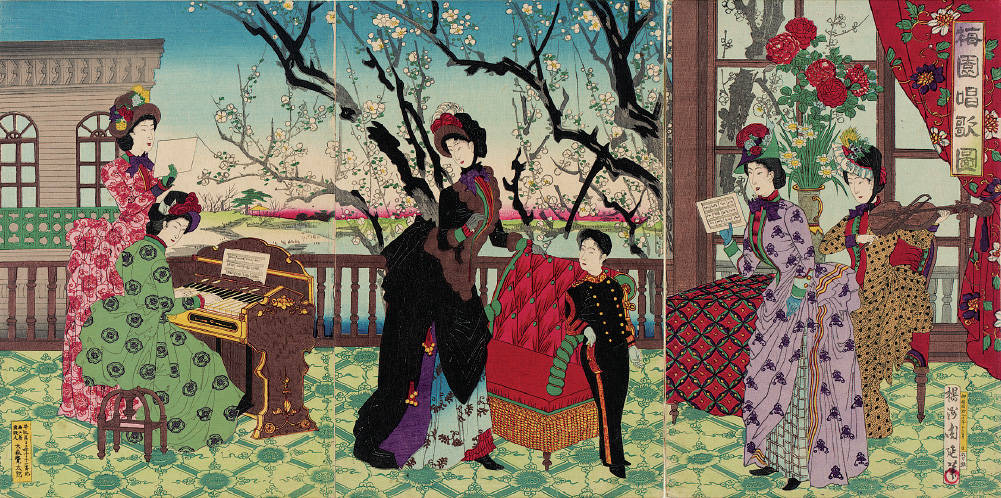Visual Source 19.2
Women and Westernization
By the 1880s, Japan was in the midst of an amazing transformation, in part the outcome of Perry’s forced “opening” of the country. By then Japan had a new government committed to the country’s rapid modernization. Particularly among the young, there was an acute awareness of the need to create a new culture that could support a revived Japan. “We have no history,” declared one of these students; “our history begins today.”19 In this context, much that was Western was enthusiastically embraced. The technological side of this borrowing was illustrated in the woodblock print of Japanese modernization.
But borrowing extended as well to more purely cultural matters. Eating beef became popular, despite Buddhist objections. Many men adopted Western hairstyles and grew beards, even though the facial hair of Westerners had earlier been portrayed as ugly. In 1872, Western dress was ordered for all official ceremonies. Women in elite circles likewise adopted Western ways, as illustrated in Visual Source 19.2, an 1887 woodblock print titled Illustration of Singing by the Plum Garden. At the same time, the dress of the woman in the middle seems to reflect earlier Japanese court traditions that encouraged women to wear many layers of kimonos.

Question
What elements of Western culture can you identify in this visual source?
Question
In what ways does this print reflect the continuing appeal of Japanese culture? Pay attention to the scenery, the tree, and the flowers.
Question
Why were so many Japanese so enamored of Western culture during this time? And why did the Japanese government so actively encourage their interest?